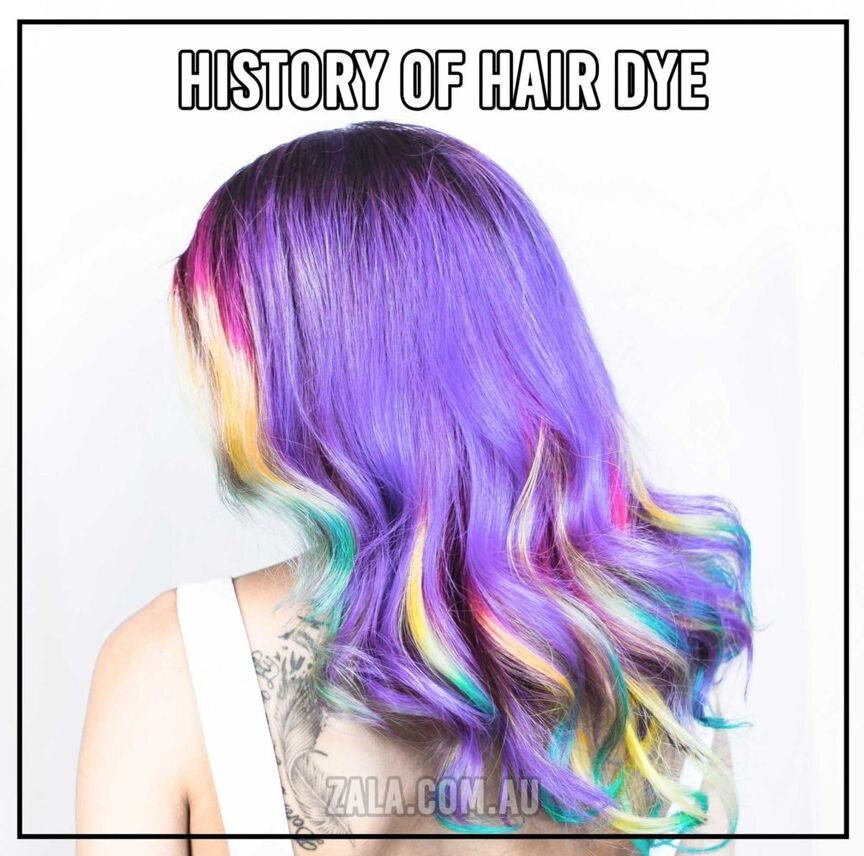History Of Hair Dye
Hair dye is by no means a modern invention. It's been around for centuries now, but most likely not in a way that you may expect.
In today's article, we'll talk about the colorful history of hair dye – where did it originate? Who were the first ones to use it? How was it discovered?

History of Hair Dye: Origins
We can trace back the first appearance of hair dye in Ancient Egypt, over a millennium and a half ago.
Back in those days, older women from Egypt used henna in order to cover up gray roots on their heads. However, the color was very temporary, so they had to repeat the process often in order to keep their hair dark.
A few centuries later, Rome finally came up with a brilliant solution. Their first attempt turned out to be quite toxic, but their second attempt – a paste made of fermented leeches left in a lead vessel for two months – was an instant hit. This paste was known as the first real permanent dye. Once the Romans used this mixture on their strands, it was virtually impossible to get the color out.
Did Hair Colors Mean Anything?
Although jet black was the only dye available to the Romans, it only took several more centuries and technological innovations later to come up with some new colors. Blonde was one of those.
During this era, the color blonde was used to differentiate sex workers from regular citizens. Women who worked in brothels were required to keep their hair color, so that people could easily tell them apart from other women. Some chose to wear wigs, but others decided to change their hair color using plant extracts.
Apart from Rome, there were also other civilizations that were starting to change the natural colors of their hair too.
For the Saxons and the Gauls, the color of the hair symbolized a person's rank in society. Wild and vibrant hair colors were also used to intimidate enemies on the battlefield.
For Celtics, meanwhile, they used natural ingredients like lemon and lime in order to gradually and effectively lighten their hair colors. They weren't exactly changing the color though, just making their strands a lighter color than before.
In much later years, Italians came up with a kind of hair lightener that worked by applying a mixture in your hair and letting it get burned or exposed under the sun. The sun rays apparently activated the mixture, working together to lighten your strands considerably.
Where Did Ginger Hair Come From?
Did you know that ginger, or red hair, didn't use to be natural? It was actually a genetic anomaly that first appeared in Scotland in the 1800s.
Due to the rarity of red hair, people during this era began suspecting red-haired people of witchcraft. Remember, this was a time when anything unexplained was attributed to witchcraft.
The madness only stopped when Queen Elizabeth I began wanting the color on her own hair, and other people started saying that they wanted to have red hair too.
Hair Dye In Modern Times
In 1857, an unexpected miracle happened.
A man named William Perkin was conducting a medical experiment involving quinine, hopefully to find a cure for malaria. The experiment failed, but instead, he discovered something else that would change the world forever.
He discovered the first synthesized dye in the color mauve, which he named Mauvine. A couple of improvements from French chemist Eugene Schueller later, and the permanent hair dye as we know it was born.
It was in 1907 when French beauty company L'Oréal, the company that Schueller eventually founded, first released the kind of hair dye that we all know and love today.
And the rest, as they say, is history.
The history of hair dye is certainly a colorful one, and there's still a lot more to talk about in future posts! Stay updated on this series by checking in often on our ZALA blog!




